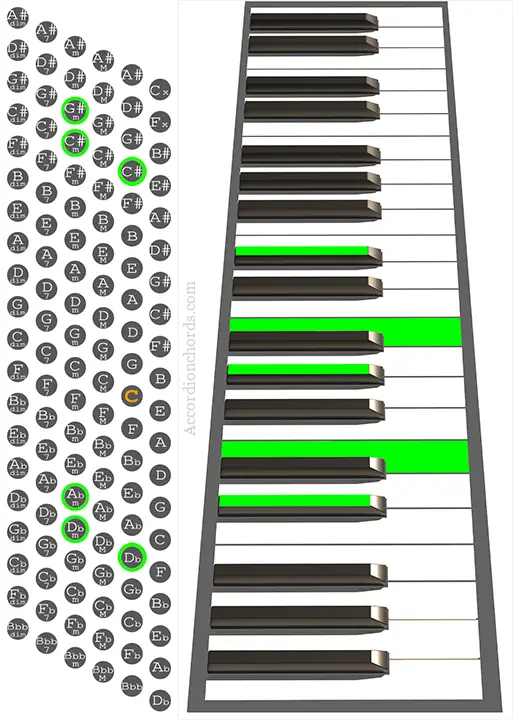AKA: C#-7(add9), C#-7/9, C# Dominant minor 9th, C# Dominant minor ninth, C#m7/9, C#m9, C#m7(add9), C#min7(add9), C#min7/9, C#min9, C# minor7/9, C# minor9
C#m9 Accordion Chord Chart

m9 Chords
It’s a five-note chord that consists of a root, a minor 3rd, a perfect 5th, a minor 7th, and a major 9th. To build a minor 9th chord, you can also stack intervals on top of each other: a minor 3rd, a major 3rd, a minor 3rd, and a major 3rd.
For example, a Cm9 chord consists of the notes C (root), Eb (minor 3rd), G (perfect 5th), Bb (minor 7th), and D (major 9th) and its intervals are a minor 3rd (C to Eb), a major 3rd (Eb to G), a minor 3rd (G to Bb), and a major 3rd (Bb to D).
These chords are commonly used in jazz music to add some extra color to a chord progression. I love using them in my own playing and I think you should give them a try too. They sound great and can really add something special to your music.
m9 Chords on Accordion
On a standard bass accordion you can play m9th chords by combining a root and/or its minor chord, with the minor chord built on its 5th degree.
For example, in the key of C, the fifth degree is G. To play a Cm9 chord, you would play the C minor chord (C, Eb, G) and the G minor chord (G, Bb, D). This creates a Cm9 chord made up of the notes C, Eb, G, Bb, and D.

Notes:
C#, E, G#, B, D#
Intervals:
R, m3°, 5°, m7°, 9°
Left hand:
C# + C#m + G#m
(D♭ + D♭m + A♭m)
Fingering:
4 + 3 + 2